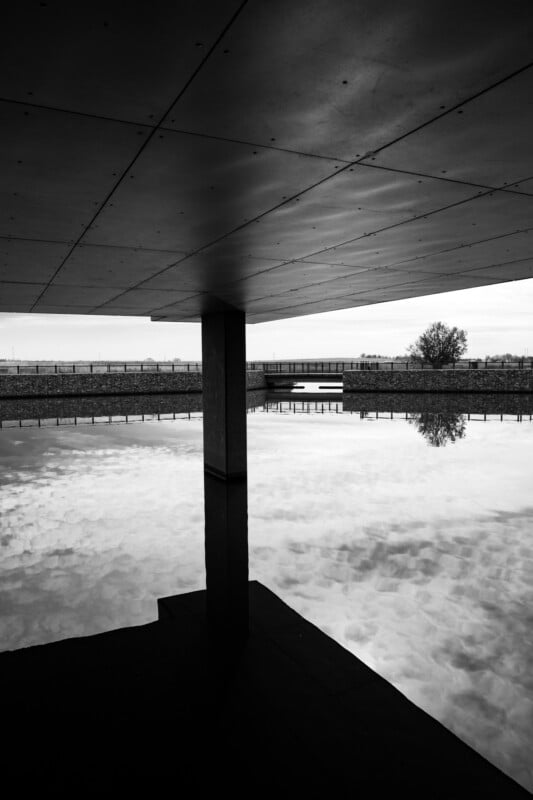Fujifilm has one of the most expansive stable of lenses you could desire for its illustrious X-mount cameras and it just got two more. This time, it chose to expand its lineup on opposite sides of the focal length spectrum.
There is a $1,199 XF 16-55mm f/2.8 R LM WR II and a $3,000 500mm f/5.6 R LM OIS WR wildlife prime lens to compliment the already popular telephoto zooms. These were pre-production lenses and as such, we are limited in what we can review. No image quality tests or definitive statements can be made about the image characteristics of the optics but that doesn’t mean that there is a lack of value in getting a first look at these exciting new lenses.

On the contrary, I can still glean a lot about the lenses in terms of handling and general performance, and will be able to have expectations ready for when the production models arrive for full review. Besides, the first major improvement with the XF 16-55mm f/2.8 II is something that you only have to feel to understand.
Fujifilm XF 16-55 f/2.8: A Legend Replaced
Fujifilm drastically cut the weight of the new version from 23.1 ounces (655 grams) down to 14.5 ounces (410 grams) which represents a huge change to the handling of this fast, general-purpose zoom. Despite the lower weight, the new 16-55mm is still weather-sealed and solidly built, and I found the barrels to have no excessive play or wobble. Walking around with the new 16-55mm was a noticeably more compact and convenient experience than the older lens offered and it feels far more balanced in hand when it is mounted on professional bodies like the X-T5 and X-H2. Fujifilm even managed to reduce the filter thread diameter down to 72mm from the larger 77mm we saw before.


The manual focus ring and aperture are smooth and feel nice to the touch, and the lens still has image stabilization and linear focusing motors. The aperture ring can now also be set for a smooth turn without click stops if desired and there is a customizable button as well. If Fujifilm cut anything out of the older design other than weight, I couldn’t find it.

From hands-on experience I can say that the 16-55mm f/2.8 II focuses quickly and quietly and from what I saw in the images I took, bokeh also appears to be smooth and pleasant. The original 16-55mm f/2.8 is a capable lens and was able to accommodate the higher resolution 40-megapixel sensors. However, Fujifilm says that this new version should deliver even better sharpness results and will future-proof the lens as well.

A very cooperative bee was gracious enough to allow me to shoot some macro shots, and this lens isn’t going to win any close-up awards. You can get about 1:5 life-size reproduction out of the new 16-55mm which is okay in a pinch.

Bokeh and sharpness will be high on my list of things to test when the production versions arrive but I am confident they will perform well. Fujifilm has also made it clear that this new 16-55mm f/2.8 II is aimed squarely at the hybrid photo/video market. I will be curious to test out lens breathing characteristics but the lighter weight of the lens suggests that it will be much better for use on a gimbal. I think videographers will be waiting with bated breath to find out more.

Fujifilm XF 500mm f/5.6: A GFX Lens Comes to APS-C
The new 500mm f/5.6 carries the illustrious Fujinon name and should be even easier to predict when it comes to overall image quality because it is an almost exact copy of the 500mm for the GFX line of cameras, albeit with a smaller X-mount bayonet instead.
The weight and size are very similar as is the presence of the gigantic 95mm filter thread, although the APS-C version shaves off roughly 40 grams bringing it down to 47 ounces (1335 grams), and sports a bright silver-grey look instead of the black livery of the GFX version.


I was very impressed with the 500mm for GFX and had a great time shooting wildlife with it. It was excellent in the center of the image and had decent corner sharpness too, despite the large image circle it had to project. If this new lens is basically the same optical formula it should be nearly ideal optically as the APS-C sensor will only use the sharper and clearer light from the central part of the lens.


Unfortunately, the bulk of the lens is retained in its application here with a smaller sensor, and to some degree, that is unavoidable due to the long telephoto range. Despite this, the overall experience didn’t feel unwieldy and the lens still handles nicely on the APS-C bodies. Focus was very prompt and the overall design is clearly made for rough environments and demanding situations. I like the customizable lens buttons, large and smooth manual focusing ring, and 5.5-stop image stabilizer. The lens foot is cut for dovetail tripod mounts and can be removed if you want to slim down the weight even further.


I have a lot of testing to do when the reviewable lenses arrive. However, we can already say that the new 16-55mm f/2.8 is appreciably smaller and lighter than the old version, and we can predict that the 500mm f/5.6 is going to be as exceptionally good as the GFX version. My only real questions are going to be about the flare resistance, sharpness, and bokeh quality, of the new 16-55mm f/2.8 but just having it in hand and feeling how light it is has me very intrigued to dig further.
